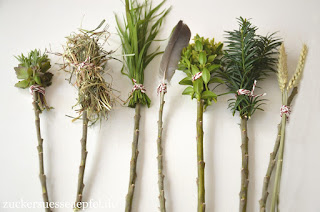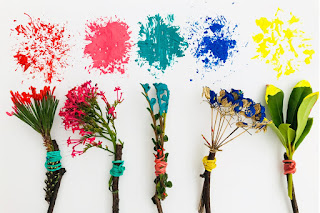Hello All!
Today we are going to be a bit adventurous with our creativity. This creative project would be fun for all of our FPLS students and families.
We are going to create pendulum paintings!

Materials Needed:
3 dowels OR a Tripod (or something similar that could work from your home)
Scissors
Plastic water bottle
Elmer's glue bottle cap
Hot-glue gun OR Gorilla Glue (or something similar)
Electrical OR duct tape
Hole punch (or you may use the scissors if necessary)
Large paper clip
Paint
Water
Large paper or 'canvas' that you want to paint
Directions:
Step 1: Use or create a tripod by tieing together your three dowels at the top.
Step 2: Using the scissors cut off the bottom 1/2 inch of a plastic water bottle. Using hot glue (or Gorilla Glue or whatever you have available) attach the Elmer's glue bottle cap to the plastic bottle spout. It may also be a good idea to use a bit of duct tape/electrical tape to reinforce this connection.
Step 3: You will need to cut or hole-punch the holes about 1/4 of an inch down the cut end of the bottle. It would be a good idea to reinforce these holes with a piece of tape of the inside and outside of the bottle prior to cutting the holes. Loop a long line of twine through each hole and knot of the inside (bottle side) then add another small piece of tape over the twine to help support its placement.
Step 4: Attached a doubled or tripled long loop of twine around the top of the tripod and it will hang down 1-3 inches below the tripod center.
Step 5: Take the three strings that are attached to the bottle and securely tie them to the tripod loop twine. Use double knots! The goal is that the nozzle hangs about 1 inch above the paper.
Step 6: Mix one part paint to one part water so the paint will run easily-be careful you still want the paint to have a paint-like quality (not too runny). Mix this mixture so it will flow easily then add it to the bottle. MAKE SURE THE CAP IS CLOSED on the glue bottle lid!
Step 7: Layout your paper or canvas under your canvas directly under the tripod center. Pull the bottle pendulum off to the side open the cap and gentle drop the pendulum bottle allowing the paint to run freely. Once you are happy with your artwork simply use your finger to cap the pendulum bottle pull it to the side and re-tighten the cap.
Step 8: Allow your project time to dry! You can re-use your pendulum as much as you would like. Use different colors and try swinging your pendulum bottle at different speeds or directions to create different lines and designs.

This creative project was definitely one of our more difficult processes-but hopefully you all enjoyed the process and the outcome. Even if there were little fails along the way hopefully you all still had fun-perspective is everything! Not to mention ending up with a cool looking final project.
As always, have fun and be creative!




































